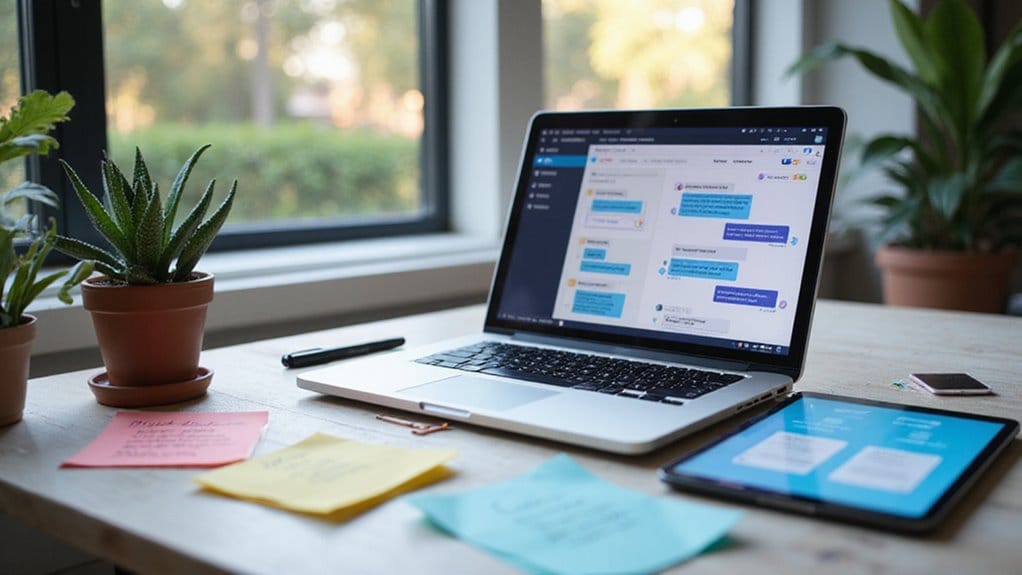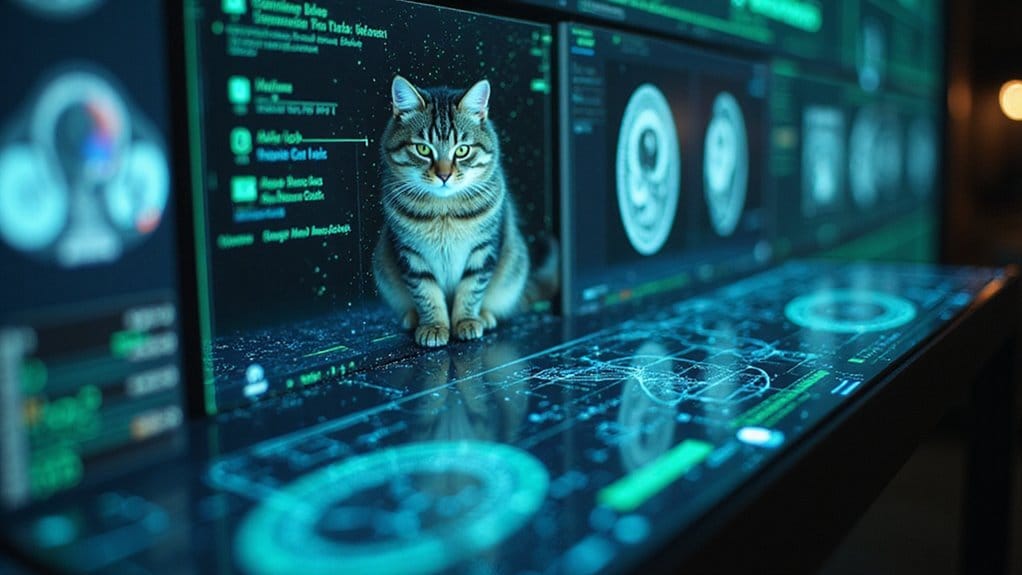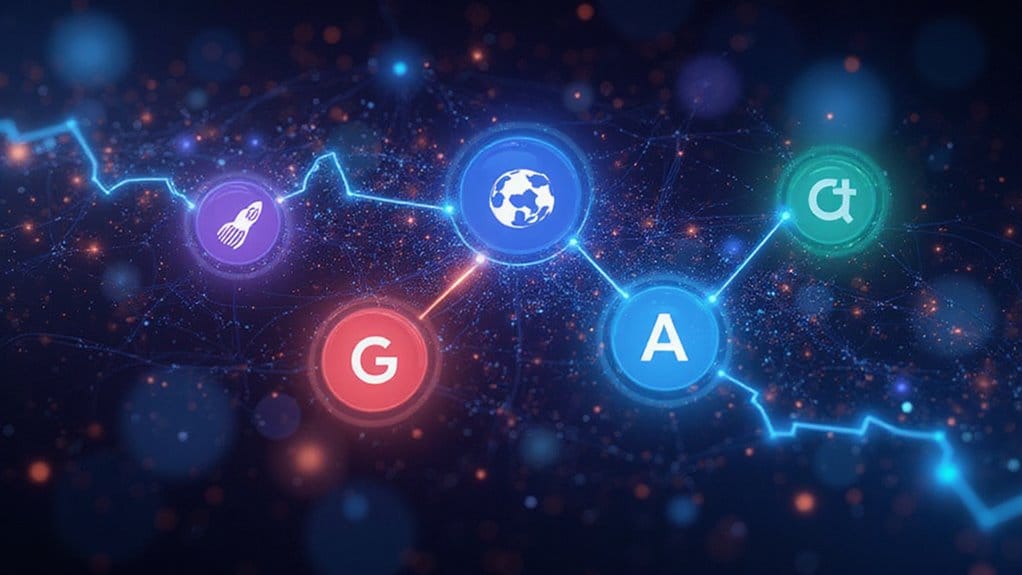Building your own AI bot is simpler than you think—if you’re willing to roll up your sleeves and immerse yourself. Start by defining the bot’s purpose, whether it’s for customer service or sales. Next, understand your audience and their preferences. Explore user scenarios to anticipate interactions. Choose a user-friendly platform like Botpress or Dialogflow, and don’t forget to integrate your bot with existing systems. Ready to take the plunge? There’s more to master on this exciting journey!

Building your own AI bot can seem intimidating, but it’s easier than you might think—if you know what you’re doing. First up, you need to define the scope of your AI bot. What tasks will it tackle? Think sales, customer service, or maybe something more niche like real estate. Align these tasks with your business goals or user needs. That’s right, your bot isn’t just a shiny toy; it needs to serve a purpose.
Next, consider your target audience. Who’s going to interact with this bot? Tailor its functionality for them. For instance, a fun chatbot for teens will look quite different from one designed to assist finance professionals.
Understanding your target audience is crucial; tailor your bot’s functionality to meet their unique needs and preferences.
Once you have a grasp on objectives and audience, it’s time to explore use cases. This is where you get to decide how your bot will improve user interaction by providing information, increasing efficiency, or enhancing overall experience.
Now, let’s talk platforms. You’ve got options like Botpress or Dialogflow, each boasting unique features. Many even offer free tiers to kickstart your bot development without emptying your wallet. Choose wisely; the right platform should align with your bot’s purpose. Defining the scope and purpose of your bot is crucial in guiding platform selection. With the help of a No-Code AI Chatbot Builder, you can create a bot that meets your specific needs without needing coding skills.
And don’t overlook educational resources—nobody wants to be left in the dark while building their digital masterpiece.
When you start building, set up a welcoming greeting to establish your bot’s purpose. Implement variables to gather user data—this helps in crafting personalized interactions. AI chatbots enhance user engagement with their ability to analyze user inputs and provide relevant responses. Design smooth conversation flows; nobody wants to wrestle with a bot that can’t hold a decent chat.
Code organization is key for easy updates, so keep things tidy.
Finally, remember that integrating your bot with existing systems is essential. Use APIs or SDKs for a seamless experience. In this digital age, a well-integrated bot can be a game-changer, but it all begins with defining its scope and understanding user interaction.
Frequently Asked Questions
What Programming Languages Are Best for Building AI Bots?
When considering the best programming languages for building AI bots, focus on Python libraries for efficiency and ease.
Java frameworks offer scalability—ideal for bigger projects.
Don’t overlook C++ performance; it’s your go-to for real-time needs.
And let’s not forget JavaScript versatility, perfect for web-based bots.
Choose wisely! Prioritize your project goals, libraries, and performance needs.
How Much Time Does It Take to Build an AI Bot?
Building an AI bot? Buckle up! The development timeline varies wildly—4 to 12 weeks, or more, depending on project complexity.
Simple bots? They’re a breeze, taking just days. But if you’re diving into AI-powered marvels, expect several months of coding and testing.
Remember, integration and customization can stretch your timeline, too. So, plan carefully. Choose your tech stack wisely, or risk delays.
Ready to get started? Time waits for no bot!
Are There Any Costs Associated With Building an AI Bot?
Building an AI bot isn’t just a fun hobby; it comes with costs.
Think licensing fees and infrastructure costs—those can add up fast! You might start with a basic bot for about $10,000, but advanced features? Brace yourself for $80,000 or more.
Don’t forget ongoing expenses for maintenance and updates.
Can I Use Pre-Existing AI Models for My Bot?
Absolutely, you can use pre-trained models for your bot.
These models are like the Swiss Army knives of AI—versatile and ready to tackle many tasks. However, don’t forget about model customization!
While they come with a strong base, they might need a little tweaking for your specific needs. So, immerse yourself, pick a model, and don’t be shy about fine-tuning it.
Just remember—your bot won’t learn if you don’t teach it!
How Do I Test My AI Bot Effectively?
To test an AI bot effectively, start with unit testing to guarantee each tiny part works perfectly—no pressure!
Gather user feedback; real users can reveal flaws you never imagined.
Monitor performance metrics, because nobody likes a slowpoke.
Finally, examine the conversation flow to keep chats smooth and engaging.
Remember, a bot that stumbles through conversations will make users cringe.








